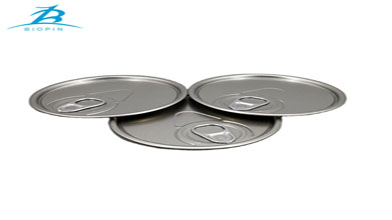How the aluminum easy open lid is printed?
Oct 12, 2024
Aluminum easy open lids, commonly used for beverage cans and food containers, are essential for convenience and accessibility. The printing on these lids not only serves a functional purpose but also plays a crucial role in branding and marketing. In this blog, we will explore the various stages of the printing process for aluminum easy open lids.
1. Surface Preparation
Before printing can begin, the aluminum surface of the lids must be properly prepared. This involves cleaning the lids to remove any contaminants, such as oils or dust, that could interfere with ink adhesion. Typically, a chemical wash is applied to ensure the surface is clean and ready for printing. Sometimes, a primer is also used to enhance adhesion and create a smooth base.
2. Printing Methods
There are several printing methods commonly used for aluminum easy open lids:
a. Flexographic Printing
Flexographic printing is one of the most widely used methods for printing on aluminum lids. This technique employs flexible relief plates to transfer ink onto the lid’s surface. It is known for its high-speed production capabilities and ability to produce vibrant colors and detailed graphics. Flexo printing is particularly advantageous for large production runs due to its efficiency and cost-effectiveness.
b. Offset Printing
Offset printing is another method that can be utilized for aluminum lids, especially when high-quality images and intricate designs are required. In this process, the ink is transferred from a plate to a rubber blanket and then onto the lid. Offset printing provides excellent image quality but is generally slower than flexographic printing, making it more suitable for shorter runs.
c. Digital Printing
Digital printing is becoming increasingly popular for aluminum lids, particularly for short runs or customized designs. This method eliminates the need for printing plates and allows for quick changes in design. Digital printing is ideal for promotional campaigns or limited-edition products, as it offers flexibility and rapid turnaround times.
3. Ink Selection
The choice of ink is critical in the printing process. Water-based inks are often preferred for their eco-friendliness and safety. These inks dry quickly and adhere well to aluminum surfaces. UV-curable inks are also commonly used, as they cure instantly under UV light, resulting in durable prints that resist fading and scratching.
4. Quality Control
Quality control is an essential aspect of the printing process. After printing, each batch of lids undergoes rigorous inspection to ensure color accuracy, design alignment, and the absence of defects. Any lids that do not meet quality standards are removed from the production line to maintain the overall integrity of the product.
5. Finishing Touches
Once the printing is complete and quality checks are performed, the lids may receive additional treatments, such as a protective coating or lacquer finish. These final steps help ensure that the printed designs remain vibrant and intact throughout the product's lifecycle.
The printing process for aluminum easy open lids is a fascinating blend of technology and creativity. From surface preparation to the final quality checks, each step is crucial in producing visually appealing and functional products. As consumer preferences evolve, the printing techniques for aluminum lids will likely continue to innovate, leading to even more exciting designs and applications in the future.
